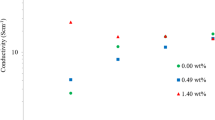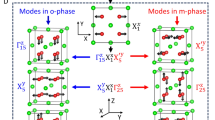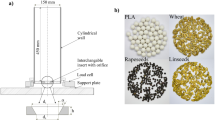Abstract
THE potential distribution in a parallelepiped arising from a point source and sink is of practical importance in the measurement of the thickness of plates and tubes1,2, and the electrical conductivity of semiconductors3. A common practical arrangement employs four collinear equi-spaced contacts: current I is passed between the outer pair, and the potential difference V between the inner pair is measured. If the contacts are aligned centrally parallel to the longest side 2α of a rectangular block of material, its width being 2β and its thickness γ in units of the electrode spacing, the conductivity is given by the triple series: 
This is a preview of subscription content, access via your institution
Access options
Subscribe to this journal
Receive 51 print issues and online access
$199.00 per year
only $3.90 per issue
Buy this article
- Purchase on SpringerLink
- Instant access to full article PDF
Prices may be subject to local taxes which are calculated during checkout
Similar content being viewed by others
References
Thornton, B. M., and Thornton, W. M., Proc. Inst. Mech. Eng., 140, 349 (1938).
Warren, A. G., J. Inst. Elect. Eng., 84, 91 (1939).
Valdes, L. B., Proc. Inst. Rad. Eng., 42, 420 (1954).
Van der Hoff, B. M. E., and Benson, G. C., Can. J. Phys., 31, 1087 (1953).
Author information
Authors and Affiliations
Rights and permissions
About this article
Cite this article
SIM, A., LEWIN, L. Point Source and Sink in a Parallelepiped. Nature 174, 1155 (1954). https://doi.org/10.1038/1741155a0
Issue date:
DOI: https://doi.org/10.1038/1741155a0



